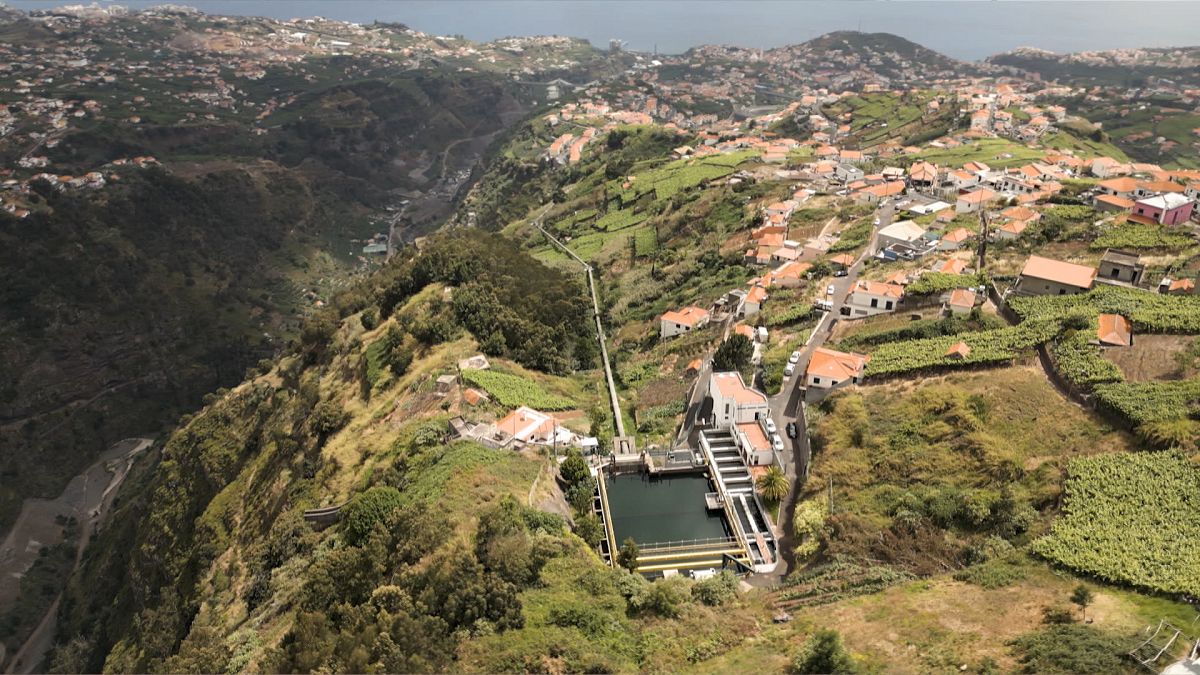This natural paradise in the Atlantic Ocean expects to generate 50 per cent of its electricity from renewable sources in the coming years.
33% of electricity used on the Portuguese archipelago of Madeira in the first half of 2022 came from renewable energy sources thanks to a project co-funded by the EU.
The autonomous region lies some 660 kilometres off the west coast of Africa and benefits from a subtropical climate. However, there is a notable contrast between the humid north which receives more than 2,000 millimetres of rainfall a year compared to the drier, warmer south which receives just 500 millilitres.
Comprised of four islands, its lush and dramatic landscape was created by a series of volcanic eruptions almost one million years ago. Its green forests, mountains, cliffs and beaches attract thousands of hiking enthusiasts and surfers every year.
The archipelago is one of Europe's outermost regions, which means its energy systems are isolated. The main island of Madeira has an area of just 741 square kilometres and its rugged terrain poses additional challenges when it comes to energy supply.
However, the contrasting climate between the north and south serves as an advantage thanks to its unique ancient water transportation system.
What are Levadas?
Kilometres of stone pipes called levadas, dating back to the fifteenth century, help to transport rainwater from the north to the south for human consumption, agricultural use and electricity production.
These levadas carry water to the Socorridos hydroelectric power station providing the entire island with power and electricity all year round.
As the island's largest and most important hydraulic system for the production of water for public supply, irrigation and hydro energy, the EU's co-funded multi-million euro project represents an important step forward when it comes to taking advantage of renewable energy sources.
"The idea was to collect water from the north coast and transport it to the south coast, where the people are. With the pumping station, we now have more water resources, because we accumulate the water above, at the top of the mountain, and it gathers here at a lower level so that after, we can pump and lose as little water as possible" Antonio Manuel Pontes Leça, the Energy Production Director at the Madeira Electricity Company (EEM), told Euronews.
Madeira boasts 2,000 km of levadas which channel water into the depths of the mountains.
"We only had a little water storage capacity. We built a 5.4-kilometre tunnel to bring all this water and store it, upstream from our hydroelectric power station, which already existed before this project" said Beatriz Rodrigues Jardim, the Quality, Environmental and Safety Director at the EEM.
"We also had to dig tunnels in the mountain, which was a major construction challenge" she added.
Wind power is also used to send the water stored in the power station back up to a reservoir on the hill if necessary when water demands are highest.
The stored water is treated for human consumption and agriculture, but it also helps to serve as a source of renewable energy, as Nuno Jorge Pereira, the Water Production Director for Wood, Water and Waste (ARM) explained: "Here we have a volume of water that is transferred during the night to higher ground and that goes through a turbine during the day. Let's say it's a strategic volume that is used to adapt to this level of energy production".
ARM, which manages and operates the water and waste systems across the region, pushes the water through giant turbines at the power plant to generate electricity. The water is then stored or used for irrigation and public supply.
The project cost €34.7 million, and €17.3 million of this was co-financed by the European Cohesion Policy.
While farmers on mainland Portugal are facing another hot summer with extended periods of little to no rainfall, growers in Madeira as less concerned about drought since the Socorridos plant was optimised to provide more water to the drier south.
Francisco Gonçalves Faria has a banana plantation but he has become more relaxed about his work.
"I grow 18 tonnes of bananas, and the watering lasts for 04h30, and takes place every 11 days. It used to be hard work, but now things have improved a lot. The water enters the tunnels and gets to the corner (of the plantation) faster and better" he said.
The project has been so successful that the EGIOSTAR Awards, a yearly competition organised by the EU Commission's Directorate General Region and Urban Polices has heralded it as one of the best EU co-funded projects over the last 15 years.

